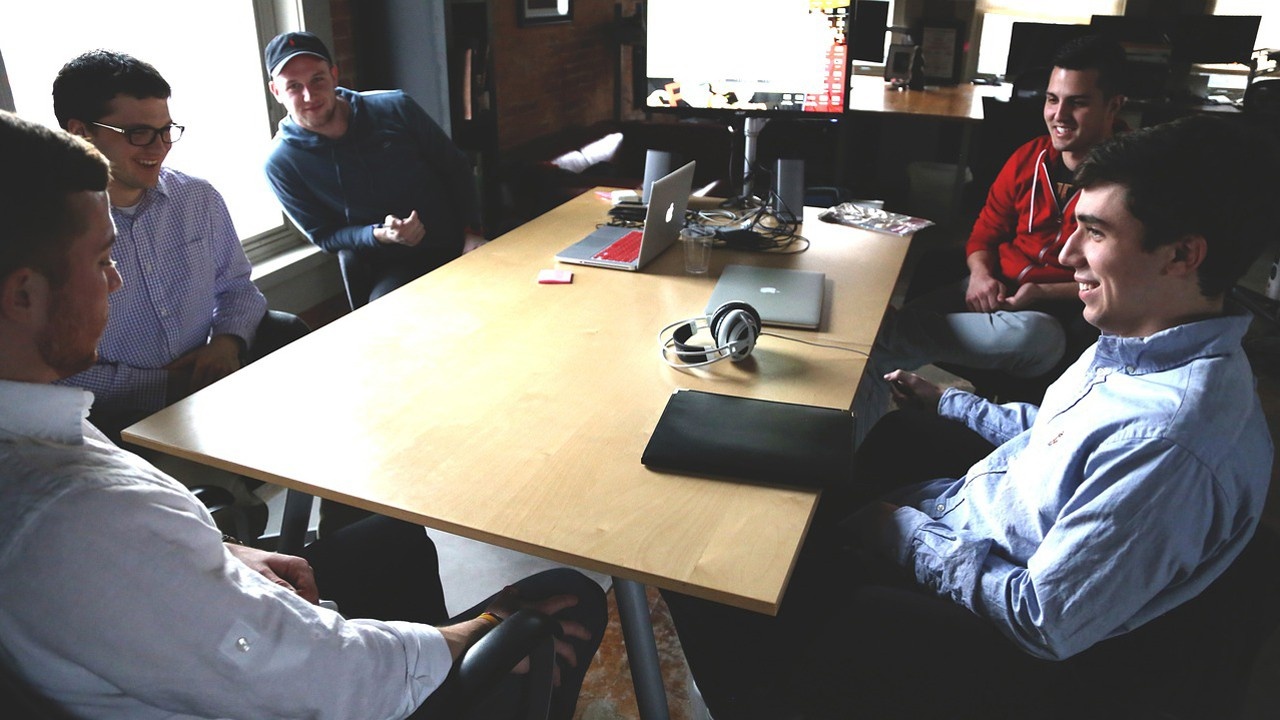
12 Jun Win or Learn – How to Profile A Customer
What if you entered a room with five people waiting for your presentation and you won the deal after fifteen minutes? Or does this seem too good to be true? One year ago I was in this exact situation and it forced me to consider how to profile a customer.
I got a phone call from a CEO with an invitation to pitch my ideas to their company on how I would help them build their new company culture and develop their first line leaders, after a merger.
I knew that I was the last out of four consultants to present my ideas. “Normal” consultants would start their presentation by introducing themselves with their knowledge, experience and highlights of their offer. Is that familiar to you? Did you experience how monotonous it can be when someone does this?
Never do that! With this, you would miss the opportunity to profile your audience and to engage them, so that you get to know what is really important to them. Profiling your customer starts days, or even weeks, before with intense research.
There are two types of customers you need to profile (no matter what you have to offer)
* The company itself
* The decision maker as an individual
CONCERNING THE COMPANY, YOU SHOULD FIND OUT:
- What is the companies products or services? High price, medium, low?
- What is the situation concerning their market? Expansive, stagnant or shrinking?
- Do they have many branches and, if so, in which countries?
- How many employees are there?
- Do they have a vision, mission or any guidelines?
- And anything else you could ask them upfront?
In my specific situation, I could rarely find something about the two previous companies, before they had the merger, concerning their leadership habits or their vision. So what would you have done?
I called the CEO and asked whether they could provide some information about their past. Anything would be helpful – I said to them – because I would suggest not to ignore what eventually had worked in certain areas and to acknowledge what made each company successful, to build the new culture from there.
They provided this information and I was able to get an impression of what was important to both companies. Now I could prepare my presentation based on my knowledge of how to profile a customer, their values, needs and desires, enriched with new possibilities for a greater future.
CONCERNING THE DECISION MAKER AS AN INDIVIDUAL, YOU SHOULD KNOW AND PERCEIVE:
- How many and which hierarchy levels will be present with which responsibility? This is also easy to find out. Just ask.
- The second is your ability to perceive the character of each person so that you can address each person individually.
Here is how it works:
How to profile a customer you ask? You have four elements to profile a person:
* A handshake when you first say hello.
* Eye contact, mimic, gesture when they place themselves or when they already sit at the table.
* The tone of their voice.
* Behaviour during your presentation.
HOW DOES A HANDSHAKE, EYE CONTACT, MIMIC, GESTURE, TONE AND BEHAVIOUR COME TOGETHER AND IS VISIBLE FOR YOU AT THE VERY BEGINNING?
* A strong handshake can give you the information that this person knows what they want. They will have direct and sometimes intense eye contact as they scan you inwardly. Their voice can be loud, precise or demanding. They may take over the conversation. They may mention in between what they like or dislike. Normally they are ready to make decisions soon after your presentation.
To win this person, you should integrate them into your presentation. Ask them questions and ask them about their experience. Acknowledge what they have accomplished already.
* A “normal” handshake can indicate a balanced person. Their eye contact is friendly. Most of the time this person has integrative gestures. Their voice is moderate. They tend to open the conversation with a smile. They will ask questions but will wait until it is appropriate. Or they will ask – “may I ask a question?”. While the “strong” customers will just jump into your speech. The “moderate” customer loves to repeat at the end what they have learned and how the procedure will go on.
To win this person you can mention their integrative ability. This could be helpful for future cooperation. You could create a picture of the role they could have in the upcoming process. Be careful to integrate the strong customer as well!
* A “soft” handshake indicates a more introverted person. When you first meet this person, they will not maintain eye contact or a handshake for a long time. They will not talk a lot and if they do speak, their tone is calm and quiet.
Don´t mislead yourself. Many introverted customers are very precise in observing what´s going on, are the grey eminence behind the scene and are the real decision maker! If you do not ask them a question during your presentation, they normally won’t say anything. However, they will register that you probably dismissed them.
Now, it´s your turn. You have all the information about the company. You have actioned this advice on how to profile a customer and met them. What do you do to win the deal?
Reflect on yourself when considering how to profile a customer
YOU SET YOURSELF UP TO WIN IN RAISING YOUR ENERGY
With every handshake, be aware that your energy flows from you and through them, and then back to you and through you. Think of it as though you are inhaling and exhaling through everything you get in contact with. This is what I did in this particular situation. So I embraced everyone energetically.
I opened my presentation by asking them questions. For example:
“Before I start with my ideas concerning the new company culture we can create together I would like to ask you some questions.”
This immediately places them in a position of power and importance. Not me or my company. I presented myself strongly by wording statements and questions carefully to imply we will be working together in future.
During my presentation, I asked everyone questions, including customers that appeared to be introverted, and asked them for their perspective and point of view.
What was the result of my informed customer research? In their feedback after my presentation, they told me that I had them within the first 15 minutes because I did not present myself as a “hero” but asked and considered what was important to them as a company, and as individuals.
IMAGINE WHAT THIS COULD MEAN FOR YOU AND YOUR BUSINESS
You should take the lead in actively integrating everyone and everything. Don’t be afraid to ask questions of the customers you profile and don’t judge anything you perceive. Build your awareness, research avidly and, most importantly, have fun. You may find that you’ve won the game!
